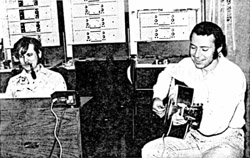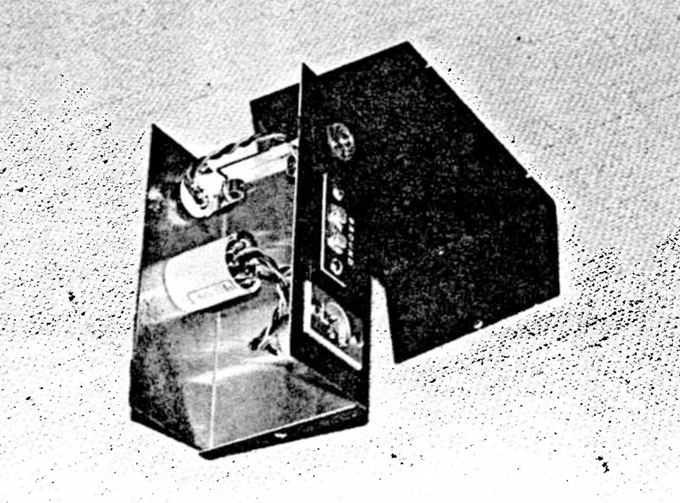
Conventional Micing
Especially as it applies to ‘rock’, the biggest problem in picking-up an amplified instrument sound through conventional microphones is that the acoustical power coming out of the amp speakers can very easily overload the microphones.
However, in order to record the electronic instrument and its amplifier as faithfully as possible to the sound which the combination is putting out, using conventional micing methods would mean that the microphone must be placed only inches from the amp speakers.
Where this is attempted, the use of dynamic microphones is recommended because of their ability to withstand extreme sound pressures, of between 110 and 140 dB before ‘CO’
Still, there may be times when the producer/mixer might want the best of both the direct and conventionally miced sound.
If there are enough inputs in the console, then both the microphone line and the one coming in from the ‘Direct Box’ (bridging device) can be run into separate ‘pots’ for recording on the common track.
As the engineer seeks the brilliance and clarity of the instrument sound fed direct, or the sound of the instrument plus the ambient of the room (studio) as the sound comes from the conventional micing procedure, he can switch from input to input, or blend both of the signals together.
The Direct Box
The primary impedance of the matching transformer should, of course, be high enough so that it does not disturb the match of the output of the magnetic pick-up from the instrument . . . and, so that it attenuates the high end, or doesn’t drop the level too much … so that the signal comes out of the ‘Direct Box’ at approximately microphone level.
It should be a nominal impedance of, say, 30,000 ohms to 50,000 ohms. The primary impedance should be high enough so that it doesn’t disturb or load the instrument’s magnetic pick-up and delivers enough signal at the console for control.
The matching transformer should be mounted in a small, well-shielded box. Careful attention should be given to ‘grounds’ or shielding of both input and output cables. Appropriate connectors on each cable should be compatible with the output of the magnetic pickup-on the instrument, and the input connector to the mixing console.
At the time of publication, William Robinson was engineering director at Sunset Sound Recorders in Hollywood, CA.
Take the PSW Photo Gallery Tour of audio equipment ads appearing in RE/P magazine, circa 1970
Editor’s Note: This is a series of articles from Recording Engineer/Producer (RE/P) magazine, which began publishing in 1970 under the direction of Publisher/Editor Martin Gallay. After a great run, RE/P ceased publishing in the early 1990s, yet its content is still much revered in the professional audio community. RE/P also published the first issues of Live Sound International magazine as a quarterly supplement, beginning in the late 1980s, and LSI has grown to a monthly publication that continues to thrive to this day. Our sincere thanks to Mark Gander of JBL Professional for his considerable support on this archive project.

